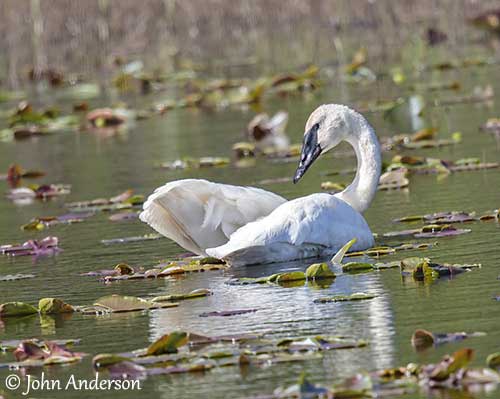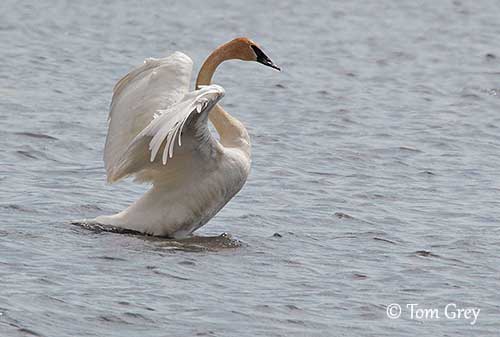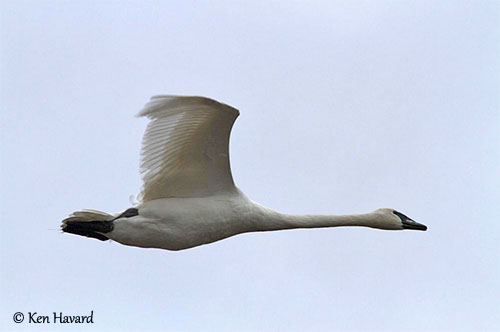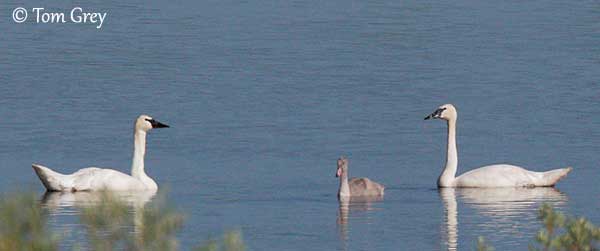
Fr: Cygne trompette
Ang: Trumpeter Swan
All: Trompeterschwan
Esp: Cisne Trompetero
Ita: Cigno trombettiere
Nd: Trompetzwaan
Sd: trumpetarsvan
Photographers:
John Anderson
John Anderson Photo Galleries
Tom Grey
Tom Grey's Bird Pictures & Tom Grey's Bird Pictures 2
Ken Havard
My Bird Gallery & Flickr gallery 1 & Flickr gallery 2
Patrick Ingremeau
TAMANDUA
Tom Merigan
Tom Merigan’s Photo Galleries
Text by Nicole Bouglouan
Sources:
HANDBOOK OF THE BIRDS OF THE WORLD vol 1 by Josep del Hoyo-Andrew Elliot-Jordi Sargatal - Lynx Edicions - ISBN: 8487334105
GUIDE DES CANARDS, DES OIES ET DES CYGNES – de Steve Madge - Delachaux et Niestlé - ISBN: 2603013769
FIELD GUIDE TO THE BIRDS OF NORTH AMERICA - National Geographic Society - ISBN: 0792274512
Animal Diversity Web (University of Michigan Museum of Zoology)
Wikipedia, the free encyclopaedia
All About Birds (Cornell Lab of Ornithology)
The Birds of North America online
Bird Web (Seattle Audubon Society)
What Bird-The ultimate Bird Guide (Mitchell Waite)
ADF&G - Trumpeter Swan (Cygnus buccinator)
Back from the Brink: Trumpeter Swans make remarkable recovery
Trumpeter Swan
Cygnus buccinator
Anseriformes Order – Anatidae Family
INTRODUCTION:
The Trumpeter Swan is the largest species of waterfowls. This large, all-white swan is a North American species. It breeds in Alaska, W Canada and locally SE to SE Ontario, near lakes, ponds and larger rivers. It winters along the coast of S Alaska, British Columbia and NW USA, in the same type of habitats and in sheltered bays.
The Trumpeter Swan was almost considered extinct in the 20th century. These birds were heavily harvested for their feathers and skins. Illegal hunting still occurs, and habitat destruction is currently the main threat for this species.
The Trumpeter Swan is now protected by laws, and both conservation efforts and reintroduction programs allow today the increase of the population which is currently not globally threatened.

DESCRIPTION OF THE BIRD:
Biometrics:
Length: 150-180 cm
Wingspan: 230-260 cm
Weight: M: 9,100-13,600 g – F: 7,000-12,500 g
The Trumpeter Swan adult is very similar to the Tundra Swan of nominate race Cygnus columbianus columbianus. It has completely white plumage, although some individuals may have a pale grey tinge instead of pure white. Head and neck are often stained rusty-brown, due to contact with minerals in wetland soils.
The bill is black with pink or red mouth, seen as a small pink or red line on the cutting edges. The eyes are dark brown. Legs and webbed feet are black.
The female has similar appearance but she is slightly smaller.
The juvenile may show some greyish feathers on head, neck and secondary coverts. The black bill may have pink or reddish patch or streaks around the nostrils. Legs and feet are pinkish-grey to greenish-grey, and become black later.

RANGE:
The Trumpeter Swan breeds mainly in Alaska and W Canada, and locally SE to SE Ontario (SE Canada). Most of them are found in Alaska, especially in Prince William Pound and the Copper River Delta.
It winters in coastal S Alaska, British Columbia and NW USA. Several resident populations from reintroduction occur now in several states of N USA. Some of them are even resident in Yellowstone National Park in Wyoming.
Yellowstone National Park
In summer
Yellowstone National Park
In Winter
HABITAT:
The Trumpeter Swan is found on land but always close to water. They breed in wetlands with rivers and streams, in salt, fresh or brackish water. They favour shallow freshwater ponds and wide, slow-flowing rivers, usually with abundant aquatic vegetation. They range mainly in forested regions, but they also frequent northern prairies.
They migrate or winter in estuaries and sheltered bays, depending on availability of ice-free water.
CALLS AND SONGS: SOUNDS BY XENO-CANTO
The Trumpeter Swan is known for its low bugle call “ko-hoh”, but it also produces a variety of sounds. Within a flock, some individuals call to warn the group of an approaching predator.
BEHAVIOUR IN THE WILD:
The Trumpeter Swan feeds typically on plant material including leaves, stems and roots of several aquatic plants such as rushes, sedges and others. During winter, it also consumes terrestrial grasses and forages on arable and pasture lands where it finds corn, cereals, potatoes and carrots. The young birds feed on aquatic invertebrates during the first two weeks, and then, they feed on vegetation.
It takes the food underwater or on water surface, and on the ground in winter. In deeper water, it forages by upending with tail up and neck underwater. The food is taken with the bill.
The Trumpeter Swan starts to nest at 4-7 years old, but the pair often forms at 2-4 years of age. They usually have long-term pair-bonds and are monogamous.
Both mates reform the pair or display to secure a mate. Both adults spread or raise the wings, and also perform wing-quivering, head bobbing and trumpeting
The Trumpeter Swan US population is mostly sedentary or only perform short local movements. Alaskan and Canadian populations fly to Pacific sea coast to spend the winter. They reach S to SW USA, and exceptionally the Atlantic coast of North Carolina, the Gulf coasts of Texas and Louisiana, and even N Mexico.
Soma vagrants have been recorded in N Japan and to Chukotka (Russia).
The flight is strong and direct, with steady, powerful wingbeats.

REPRODUCTION OF THIS SPECIES:
The pair forms in March-April and the laying occurs in April-May.
The Trumpeter Swan is very territorial during the breeding season, and aggressive encounters may occur between them or against other animals.
The nest-site is often surrounded by water, and there is usually only one pair per pond. The bulky nest is on the ground, on small islands, or on beaver or muskrat houses, or on floating platforms. Both adults build the nest, but the female does most of work.
The structure is a low mound of plant material such as grasses, sedges and other aquatic plants, with a bowl in the centre. It may range from 120 to 360 centimetres in diameter. The same nest is often reused in several following years.
The female lays 4-9 whitish eggs, becoming soon nest-stained. The incubation lasts 32-37 days, mainly by the female but the male may help from time to time. The young birds leave the nest very soon, within 24 hours after hatching. They can swim and they follow their parents to the feeding sites. They can fly about 3-4 months after hatching, and are independent after one year. Both parents care for them during this period.

Several predators such as bears, wolves, coyotes, raccoons and Common Raven snatch the eggs. Chicks and adults are prey to predators such as coyotes, bobcats, red foxes and Golden Eagle. However, the main predators of adult swans are humans.
PROTECTION / THREATS / STATUS:
Thanks to perseverance, conservation efforts and reintroduction in some regions, the Trumpeter Swan is today back from the brink of extinction. Habitat loss, illegal hunting and lead poisoning in wetlands were and still are the main threats for this species.
By the year 2000, the wild population was estimated to number 23,000 individuals with about 70-80% of this population breeding in Alaska.
The Trumpeter Swan is not globally threatened, and currently evaluated as Least Concern.